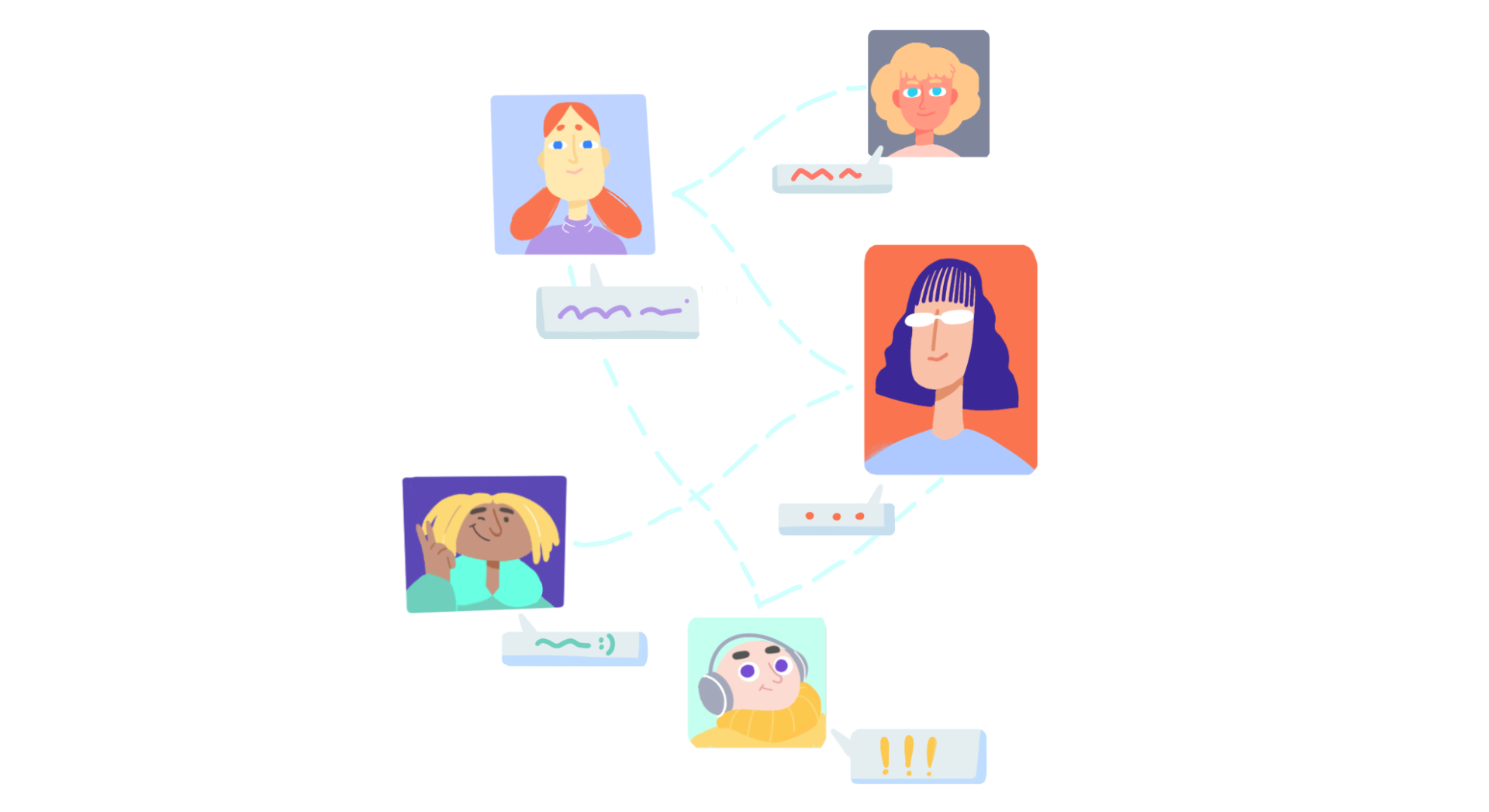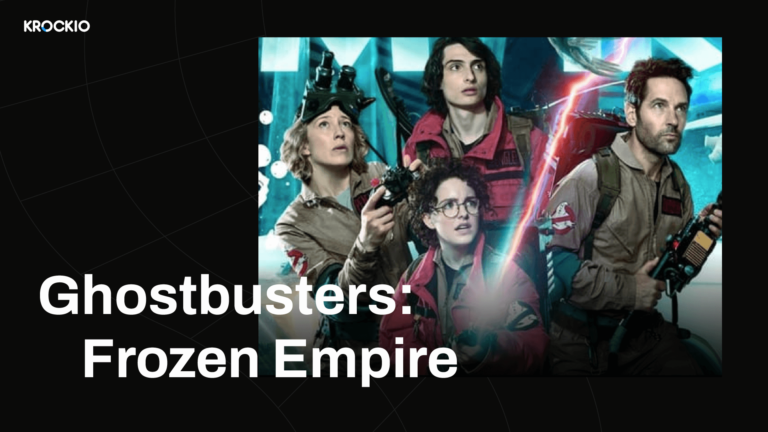How to manage a creative team? Is managing a team of designers even different from managing a team of analysts? What are the keys to leading a creative team to success? And what are the road bumps to avoid?
Great management requires a set of diametrically different hard and soft skills: from team collaboration software knowledge to emotional intelligence. Now imagine throwing in creativity and remote work in the mix.
We talked with Brent George, an experienced realization director and co-founder of Agora Community, and Vangelis Karadimas, a director, and owner of an animation studio vktoons, to find out how they manage creative teams; what the most common mistakes creative team leads should avoid, and how to make your team thrive.
The Creative Hierarchy

How do different creative teams function? Is there a strict hierarchy in place? Or does your team adopt a more horizontal structure? Finding out the best way for your team to operate can give you the keys to the most productive management.
Each creative agency will be different in this aspect. Some teams prefer a leader-and-follower situation, while others would fight to make sure everything is equal, no matter the status.
There is a hierarchy, but with a lot of creative freedom. I think this works better when decisions are to be made and work to be done while checking all the alternatives and acknowledging the person who suggested it. – Vangelis shares about his team
Brent says that the key to creative team management is balance. There is a slope with the Micromanagement at one end and “a Lord of Flies scenario” at the other end. “And you need to set the dimensions of what the team needs to make and let them create and make choices within that sandbox.” – he elaborates. Neither extreme is healthy.
Creative Complacency Trap
A problem that haunts many creatives is the absence of a challenge. Especially when business is doing well, and as a result, your team slacks off. This can be detrimental for creatives that should always be advancing their ideas and techniques.
Vangelis says that “listening to your co-worker’s ideas” can be a great way to avoid complacency.”
One can kick complacency to the curb if they always have the next project/step/stage/challenge right in front of their eyes. You might find using tools like Gantt Chart is quite useful for that. Especially if it is built-in and automatically synced with all your project changes and upcoming deadlines.
How to Motivate Creative Team

We’ve all had those days (or if you’re lucky weeks) where everything is going well. Projects are seamlessly being turned out and your workflow is strong. However, there are no steady slopes in any line of work. Especially, in creative fields.
Make sure that the team is healthy and happy, learning on the job. And not in their spare time. Make strategic choices as a team lead to create an environment and pair team members in a way that they can learn from each other.
I always talk about the Golden era of 2D animation, where I come from. We learned on the job, because, typically, you would first become an in-between artist. It means you were working directly with an animator, and then, become an assistant animator. Imagine I would create a Maya scene with the key poses, and then give it to somebody else to finish. No one does it today. But it creates a great framework to learn and grow on the go, from the industry professionals. – Brent recounts
Vangelis also says that the best way to keep your team at a point of fruitful advancement is to continue to “discuss solutions, ideas, and exchange experiences.”
How to Streamline a Creative Workflow

Whether your creative workflow follows a standard template from project to project or it differs in execution, creative project management software can help you get to that end goal. For Vangelis, workflows “vary depending on variables.”
Let’s have a look at some of the useful features the creative project management app should have to streamline your team’s workflow:
- Ready-made templates for various production fields: animation, advertising, TV production, etc. Templates simply save time.
- Task assignment: obvious feature, yet lacked by some of the most widely used apps, that were designed specifically for creative professionals.
- Task tracking: again, an obvious necessary feature to keep all the team informed of the progress of the project.
- Online Proofing: preferably with assigned comments, visual mark-up features, time-stamped video feedback, and immediate email notifications.
- Client Review: This feature better is at the top level of user-friendliness and is as simple as possible to execute. Otherwise, say hello to the risk of getting buried in the pile of email revision requests.
- Gantt Charts: As we mentioned above, a great way to stay on top of all the tasks across all the projects. If it is an interactive type, that syncs with all the team’s work – better yet.
- Versioning: Only one out of a hundred creative projects get done without creating various versions. And that is very optimistic stats anyway.
Project management software takes away the burden of routine tasks, allowing your creative team more time to create. And if the software was designed specifically for the creative fields, like Krock, – even better.
Once you start using a proper production tool and move away from Excel documents, it changes everything. – Brent
He also agrees that project templates and tools like the Gantt chart are helpful when he says:
Especially if you combine the system to track the progress of the project and a pipeline that facilitates the approval process of the assets. And then, everything just works! You don’t have people working on unapproved assets, the changes are communicated in real-time, and the efficiency level skyrockets.
Building a Winner Creative Team

What are the traits to look into for the new candidate to join your team of creatives?
Brent says the top skill for a creative team member is to be a “good communicator and being able to speak your mind. I am the kind of leader that likes to build an environment where team members can challenge me and are comfortable doing so.”
He also elaborates on the role of a creative team lead:
For a team to succeed, as team lead, you need to provide “the winning conditions. That means you have to spend enough time proactively looking at the horizon, thinking “what could possibly go wrong to slow my team down along the way?” And spend your energy on solutions to those problems while those speedbumps are way over the horizon, and so that they never become a real problem.
If you want to help out your team to perform their best, smooth up their workflow by using creative project management tools, like Krock. Curious to try it out? You can always check out the free trial, or book a quick demo call and get familiar with all the features.
We hope, that this article provided you with some valuable insights on how to manage creative teams, lead them to success, and ensure their members are at the top of their game. And remember, much like everything in life, creative team leadership is about balance.
Not listening to those who they lead or – on the contrary – accepting anything they say without judgment. Also acting as the authority. – Vangelis Karadimas, a director, and owner of an animation studio Vktoons.









